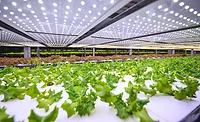New Survey Reveals How Food Safety Educators Reach Consumers
At today’s Consumer Food Safety Education Conference in Arlington, VA, findings from the a report commissioned by the Partnership for Food Safety Education were released. The most startling finding was that, despite the digital age, 90 percent of food educators say they conduct their work with consumers face-to-face. Slightly more than one-third of food educators say they rely on online methods of community outreach.
"We conducted this environmental scan for the Partnership for Food Safety Education to better understand where health and food educators are focusing their consumer outreach activities," said Dr. Benjamin Chapman, associate professor in the department of Youth, Family, and Community Sciences at NCSU. "Gathering data on educators' delivery methods and target audiences allows the food safety community to see where gaps exist -- and provide a roadmap for where to put resources in the future."
The most active organizations working to educate consumers about safe food handling at home are:
- Federal government
- Cooperative extensions
- Public health agencies
All three groups have worked to primarily reach children, students and parents with children at home.
The federal government was found to reach the greatest number of consumers by way of programs such as Food Safe Families, Cook it Safe and Fight BAC!(R). In the realm of home safe food handling, cooperative extensions seem to have the most reach. Public health agencies have succeeded greatly in reaching the elderly. Secondary target audiences that food educators in all three groups reach out to include low-income populations, pregnant women and consumers responsible for household food purchasing.
Another survey finding uncovers that measuring the effectiveness of said programs is not always a priority. Only about half of surveyed food educators bother to measure the impact of their programs, and just as many either don’t conduct evaluations or don’t know if an evaluation system is in place.
"We all need to do a better job of measuring and then telling the story of the impact of food safety education on consumer health," said Shelley Feist, Executive Director, Partnership for Food Safety Education. "Much of this year's Consumer Food Safety Education Conference is focused on program evaluation and tactics for measuring program impact. Our hope is that the conversations and the tools shared in these sessions will make measurement a more attainable goal across the board."
For more information, visit TeamFoodSafety.org.
Looking for quick answers on food safety topics?
Try Ask FSM, our new smart AI search tool.
Ask FSM →








